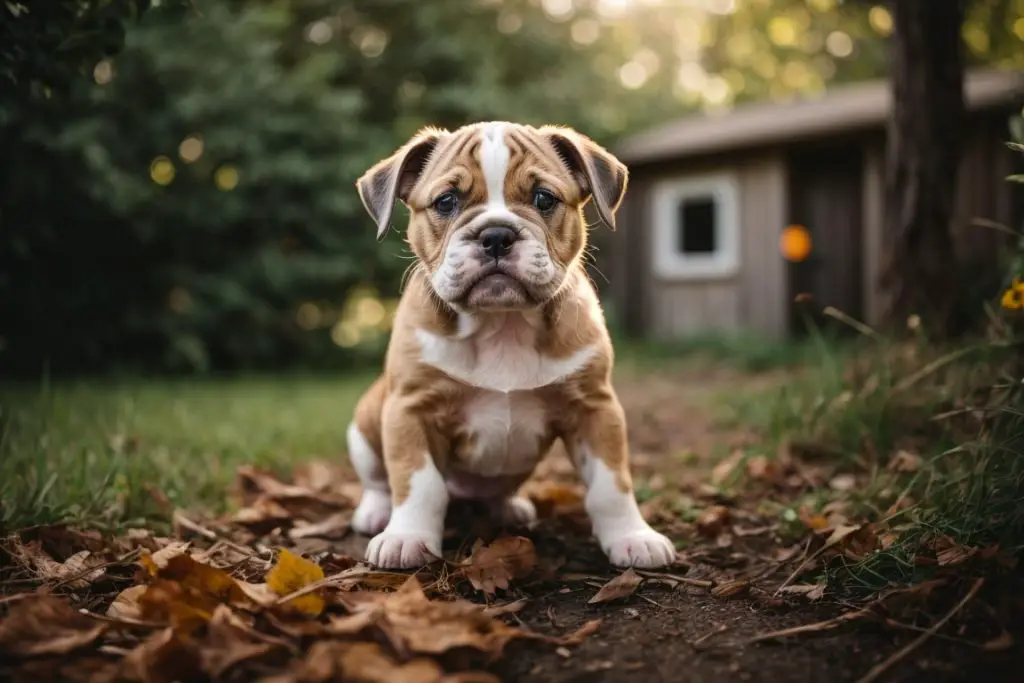
Welcome to the comprehensive guide to the Whippet Bulldog Mix, also known as the Bullwhip.
If you’re keen to discover:
- The unique personality of the Bullwhip
- Essential training and grooming needs
- Health considerations and expected lifespan
Then you’re in the right place. This guide is packed with detailed information to help you understand this intriguing breed mix.
So, let’s get started.
Quick Whippet Bulldog Mix Facts
Size: Medium, standing 18 to 24 inches (45 to 61 cm) tall.
Coat: Short and smooth.
Energy: Moderate.
Suitability for Children: Excellent.
Life Span: 10-15 years.
Temperament: Gentle, friendly, and adaptable.
Training: Intelligent and trainable, requires consistency.
Grooming: Minimal shedding, easy to maintain.
Friendliness: Generally sociable and good with other dogs.
Origin of the Bullwhip
The Bullwhip, a special blend of Bulldog and Whippet, has an interesting background. Its Bulldog roots go back to 13th-century England. Here, Bulldogs were first bred for the harsh sport of bull-baiting. This historical link is shown in the breed’s name, with “bull” pointing to their bull-baiting past.
But, the modern Bulldog has changed a lot from its Old English Bulldog ancestors. It has moved from a bull-baiting breed to a much-loved pet. This change was mainly driven by dedicated breed clubs. The Bulldog Club in England was set up in 1878, and then the Bulldog Club of America in 1890.
Nowadays, Bulldogs are treasured pets, known for their loyalty and loving nature.
Origin of the Whippet
The Whippet first appeared in the late 18th or early 19th centuries, but its true beginnings are still a bit unclear. Art from as far back as the 1400s shows smooth-coated dogs that look like small Greyhounds, suggesting the breed has a long history.
These early Whippets were mainly used to hunt hares in open fields, even though they weren’t good at tracking scents. They are often mistaken for Italian Greyhounds because they were crossbred a lot in the past. Whippets look very similar to both Greyhounds and Italian Greyhounds.
The name “Whippet” comes from the phrase “to whip it,” which means to move quickly. Whippets come from Northern England and were often used by poachers because they are fast and good at hunting.
Origin of the Bulldog
Bulldogs trace their roots back to 13th-century England. They were originally bred from the now-extinct Old English Bulldog for the harsh “sport” of bull-baiting, which is why “bull” is in their name.
This cruel practice was eventually banned, leading to a change in the breed. The modern Bulldog, known for its friendly and companionable nature, came from these changes.
The Bulldog Club in England was set up in 1878. This was followed by the Bulldog Club of America in 1890, which helped to boost the breed’s popularity.
Whippet Bulldog Mix Appearance
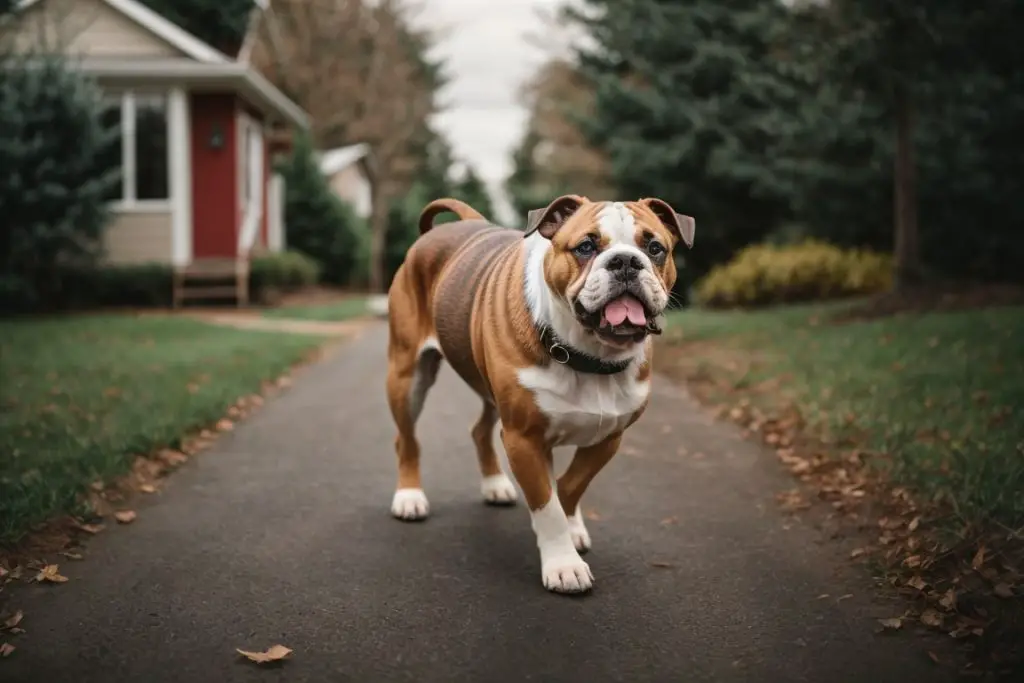
The Whippet Bulldog Mix, or Bullwhip, has a unique look that shows its special lineage. This breed usually gets the strong build of the Bulldog, along with the slim, sporty body of the Whippet.
Their expressive eyes, together with a short, smooth coat, make them look charming and lovable.
Colour
Whippet Bulldog Mixes, also known as Bullwhips, can show a range of colours. This is due to their Whippet parent. The rarest colours are pure white and dun. Dun is a brownish colour that people often confuse with chocolate or liver.
In addition to solid colours, Bullwhips can have different coat markings. These include brindle, mask, parti-colour, and white trim. Brindle, which looks like tiger stripes, gives a unique pattern to their coat. But, it’s less noticeable than a tiger’s markings.
Size
Bullwhips usually take on a mix of their parent breeds’ sizes. Male Bulldogs typically weigh around 54 lbs (24 kg) and stand about 17 inches (43 cm) tall at the shoulders.
On the other hand, females are a bit smaller, averaging around 50 lbs (22 kg) in weight and 16 inches (40 cm) in height.
Typical Temperament Traits
Getting to know the nature of a mixed breed like the Bullwhip means thinking about the traits of its parent breeds. Bulldogs, famous for their gentle and even-tempered nature, are determined and brave without being nasty or aggressive.
Their behaviour is peaceful and dignified, thanks to breeders’ work to get rid of aggression. Bulldogs are friendly, patient, and a bit stubborn, building strong relationships with children and living peacefully with other pets.
Whippet Personality
Whippets, one of the Bullwhip’s parent breeds, are known for their special mix of traits. They have a strong urge to chase, a trait that comes from their hunting past. But, they are also very loving and loyal, often forming close bonds with their human friends.
Their energy levels are high, especially when running fast, but they can also show times of shyness or not wanting to socialise. This is why it’s good for Whippets to socialise, as it stops them from falling back into these undesirable traits.
Like Whippet Boxer mixes, they do well in active families, showing a strong yet loving nature. Their care and upkeep needs are average, making them a manageable breed for many homes.
Bulldog Personality
Bulldogs are famous for their kind, gentle nature. This makes them reliable and steady friends. They love being around people and often look for human attention. They form strong bonds with children and other pets.
Despite their friendly and patient nature, Bulldogs can be stubborn. They may show aggression towards dogs they don’t know. As great watchdogs, they keep their natural bravery. They fit well into flat living, needing only a bit of exercise because of their low stamina.
Bulldogs do best in mild climates. They struggle in very hot or cold temperatures. The American Kennel Club says they have a calm and kind nature. This further proves they make wonderful family pets.
Whippet Bulldog Mix Combined Temperament
The Whippet Bulldog Mix has a unique mix of traits from both parent breeds. These dogs can be a mix of the Bulldog’s friendly but sometimes bold nature and the Whippet’s shyness.
Their energy levels usually find a balance, combining the Bulldog’s relaxed attitude with the Whippet’s lively spirit. But, their nature can lean more towards either parent breed. So, early socialisation is needed to avoid them becoming too shy or too bold.
Physically, Bullwhips can look like the lean, sporty Whippet or the strong, sturdy Bulldog. They might have features like short legs, loose skin, and large heads.
Their teeth usually form a scissors bite. This shows the mix of the Whippet’s long, thin skull and the Bulldog’s wide, square jaw.
Raising a Bullwhip Puppy
Raising a Bullwhip puppy needs steady behaviour and patience. High-value rewards are very important in training.
Positive reinforcement is the main way to build trust. In some situations, getting help from a professional could be useful.
Even though Bullwhips have short-haired coats, they need brushing every week. This helps keep their coat shiny and gets rid of loose hairs or dirt.
How often you bathe them depends on how active they are. Usually, this is every 2-4 weeks.
Regular exercise is also needed. Aim for about 8 miles (13 km) of walking each week.
Training can be hard because Bullwhips can sometimes be stubborn. So, finding treats or food that motivate them is key. Remember, being harsh doesn’t help with training. Patience and steady behaviour are what make a Bullwhip behave well.
Whippet Bulldog Mix Socialization
Training your Bullwhip to socialise is a key part of their growth. It aids them in becoming balanced, self-assured dogs, at ease in a range of environments and situations.
Introducing them early to different people, pets, and experiences can greatly shape their behaviour and temperament.
Socializing With Other Dogs
Bullwhips, like all other breeds, really gain from early and regular socialising with other dogs. This interaction helps them learn key communication skills and manners. It lowers the chance of them becoming aggressive or scared.
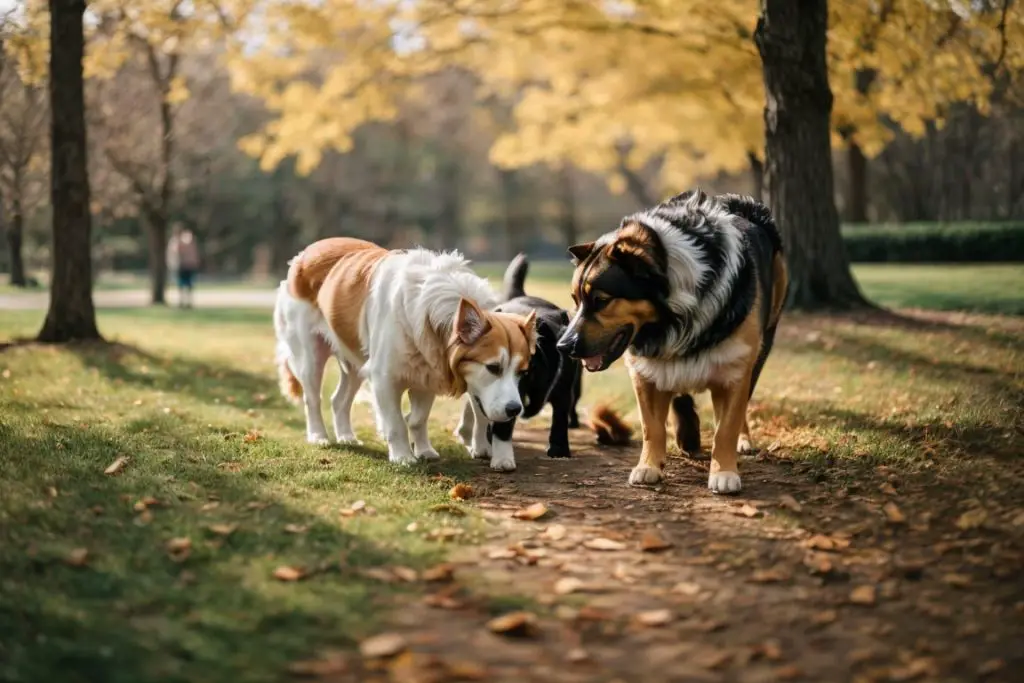
Dog parks, playdates, and obedience classes are great chances for your Bullwhip to meet a range of breeds and temperaments. But, each meeting should be positive and controlled. This helps your pup grow into a well-behaved, friendly adult.
Socializing With Children
Bullwhips can be great friends for children, thanks to their kind and friendly nature. But socialise them early to make sure a good relationship forms.
Introduce your Bullwhip to children in a quiet, controlled setting. This lets them get used to the child being around.
Promote gentle play and watch all meetings to make sure they’re safe. It’s vital to teach children how to behave with dogs in a respectful way.
This shared understanding helps a strong bond form between your Bullwhip and the younger members of your family.
Training And Exercise
Training and exercise are important when bringing up a Whippet Bulldog Mix. You can start training this breed as early as 8 weeks old. This training can be split into life skills, socialising and getting used to things, and care exercises.
When it comes to exercise, this breed is very lively. They need at least an hour of outdoor activity every day. This could be playing, walking, or running at the park. This makes them great friends for those who lead an active lifestyle.
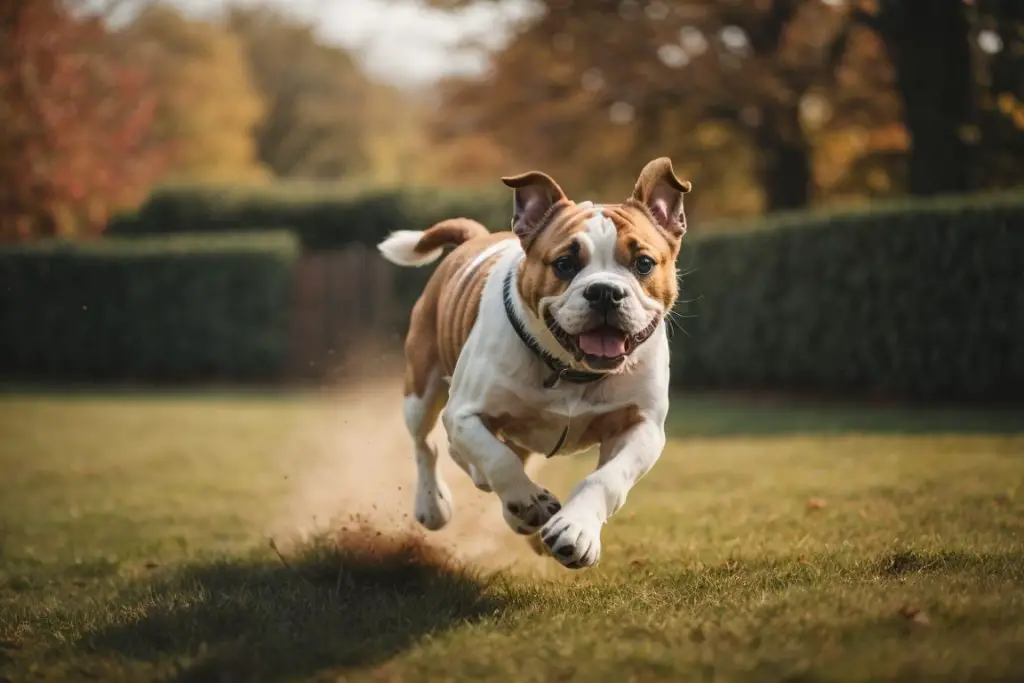
But, training a Whippet Bulldog Mix can be hard because of their stubborn and independent nature. So, they should start training early. This is especially important for this breed to build good relationships with people and other pets.
Space Requirements
Bullwhips, being medium-sized dogs, need a fair amount of space. They can adjust to flat living, as long as they get regular exercise.
But, a house with a safe, fenced garden is perfect for them to run and play.
Despite their small size, about 45-50 cm tall, they enjoy having space to stretch their legs and explore.
Whippet Bulldog Mix Health And Care
Looking after a Bullwhip can be tricky because they might inherit health problems from both parent breeds. Regular vet visits and a balanced diet are key to keeping them healthy.
But, each Bullwhip is unique and may not develop the same health issues as their parent breeds.
Grooming Requirements: Do Whippet Bulldog Mixes Shed?
Whippet Bulldog Mixes do lose fur, but not much because of their short coat. Brushing them once a week can help control this and keep their coat healthy.
Giving them a bath every few months can keep any smells at bay. Regular grooming also means cutting their nails every few weeks.
Their teeth should be brushed two to three times a week. Also, wiping their droopy ears with a damp cloth can stop ear infections.
Whippet Health
Whippets are usually healthy dogs. But, they can get certain health problems. These include heart disease, especially mitral valve disease and dilated cardiomyopathy. They can also have eye problems like cataracts and progressive retinal atrophy.
Whippets can also get a skin problem called pattern baldness. They can suffer from a blood disorder named von Willebrand’s disease. Regular vet check-ups and a good diet can help keep them healthy.
Sources: PetMD
Bulldog Health
Bulldogs, even though they look strong, can have many health problems. One common problem is Brachycephalic Airway Syndrome (BAS). This is caused by their flat faces. This syndrome can cause long-term discomfort, problems with exercise, and even trouble eating because of breathing issues.
Another usual health worry in Bulldogs is arthritis. This can cause a lot of joint pain and discomfort, affecting their ability to move.
Bulldogs are also likely to have eye problems. Cherry Eye is the most common. This problem is marked by a red bump sticking out from the corner of the eye. It can cause discomfort and might even affect their sight.
Sources: Vet Pet Guide
Whippet Bulldog Mix Health
Whippet Bulldog Mixes often struggle with skin allergies. These can be caused by things in their environment or their food. These allergies show up as itching, too much licking or scratching, hair loss, and skin sores.
Some Bullwhips might also have breathing problems like a runny nose, sneezing, coughing, or wheezing. As they get older, arthritis becomes a common problem, causing stiff joints, pain, and swelling.
Even though hip dysplasia is common in medium to large breeds, Bullwhips have a low risk. But, their thin coat and bare skin make them prone to cuts and scratches.
Life Expectancy
The lifespan of a Whippet Bulldog Mix, also known as a Bullwhip, can be between 10-15 years. This is affected by things like genes, health, and way of life.
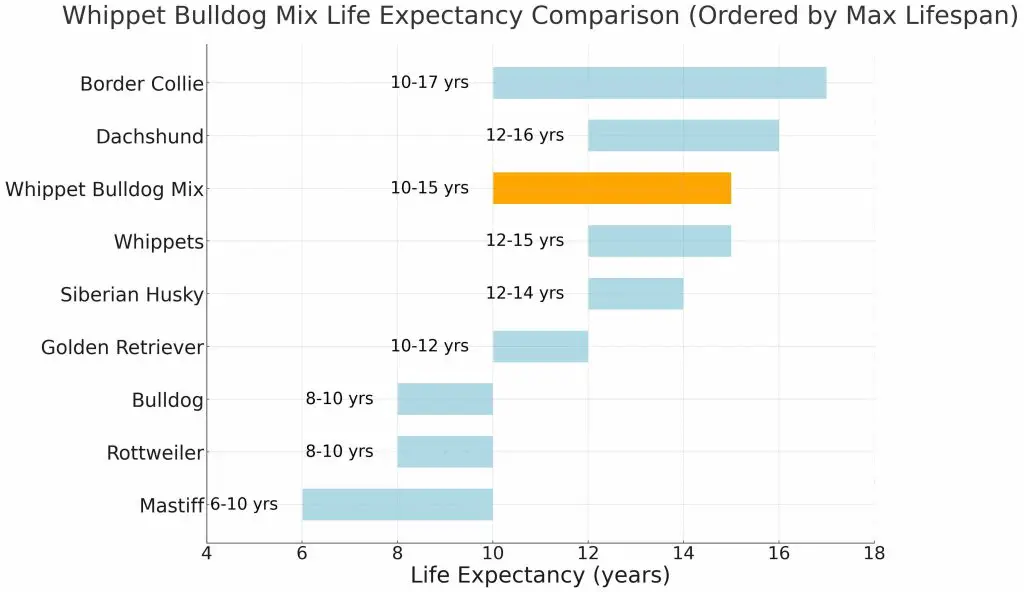
Regular exercise and keeping the mind active, along with a good diet, can help a Bullwhip live longer.
Where to Find A Whippet Bulldog Mix Puppy
Finding a Whippet Bulldog Mix puppy might be a bit tricky because of their special breed mix. But, you can begin your search with trustworthy breeders who focus on mixed breeds.
Online platforms and local pet groups can also be helpful. Make sure the breeder is honest and puts the health and happiness of their dogs first.
Adoption is another good choice, with many rescue groups and shelters having mixed breeds ready. But, you should remember to be patient in this process, as finding the perfect Bullwhip puppy might take a while.
Whippet Bulldog Mix Breeders
When looking for a Whippet Bulldog Mix breeder, you should find one who puts the health and temperament of their dogs first. Bullwhips are known for their calm, friendly nature. They get along well with children, making them perfect companion dogs.
Health issues like entropion, gastric torsion, colitis, and elbow problems should be tackled by the breeder. Good breeders should show proof of regular health checks. These include eye tests, elbow checks, blood tests, and X-rays.
As this is a mixed breed, finding a dedicated Bullwhip breeder may be hard.
Instead, think about contacting breed-specific rescue groups or shelters. They often have mixed breeds looking for homes. Always make sure the breeder or organisation is trustworthy and puts the welfare of their dogs first.
Adopting a Mix Breed Dog. Cost and Challenges
Getting a mixed breed dog, like the Bullwhip, can be a rewarding experience, but it’s not without its difficulties and expenses. The cost of adoption can change a lot. It can be affected by things like the dog’s age, health, and the specific rescue group.
Puppies, for example, often have a higher adoption fee because they need more vaccinations and care.
Mixed breeds like the Bullwhip might have special health needs because of their genes. This could lead to higher vet costs in the future. You should also think about the cost of basics like food, grooming, and training.
The difficulties of adopting a mixed breed dog often come from their temperament and behaviour. This can be unpredictable because they’re a mix of two different breeds. But, with patience, regular training, and lots of love, these difficulties can be managed. This makes adopting a mixed breed dog a truly satisfying experience.
FAQs
Here are the responses to some of the most commonly asked questions about the Whippet Bulldog Mix.
What are the different names for a Whippet cross Bulldog?
The Whippet cross Bulldog is known by many names. The most usual is the ‘Bullwhip’, a mix of the two parent breeds’ names. Other names are ‘Whippet Bulldog mix’, ‘Bulldog Whippet mix’, ‘Whippet Bulldog cross’, and ‘Bulldog Whippet cross’.
Do Whippet Bulldog Mixes Bark a Lot?
Bullwhips, partly Whippet, are usually not very noisy dogs. They might sometimes bark to warn their owners about outside animals or when the doorbell rings.
Some Bullwhips might also bark while playing or to express a need. They might sometimes whine, sigh, or howl, but growling is uncommon.
But, if left alone for long periods, they might show their unhappiness by barking or whining. While Whippets are not usually destructive, any dog breed, including the Bullwhip, can become destructive if bored.
Is the Whippet Bulldog Mix Breed Intelligent?
The Whippet Bulldog Mix, also known as Bullwhip, is a breed known for its calm, friendly nature and a certain level of cleverness. Whippets are ranked 96th for obedience and working intelligence, but they have instinctive intelligence. This is a trait the Bullwhip likely inherits.
Although this breed is smart, it has a streak of independence, which can make training a bit tricky. But, with the right socialisation and upbringing, Bullwhips can turn into sweet, happy, and well-adjusted pets.
Dog intelligence isn’t just about learning tricks and commands. It’s also about their ability to adapt, understand, and respond to their surroundings.
Other Popular Posts
- Whippet Corgi Mix: A Full Guide
- Whippet Pitbull Mix: A Full Guide
- Whippet Australian Shepard Mix: Complete Guide
- Whippet Vizsla Mix: A Popular Crossbreed
- Whippet Spaniel Mix: A Full Guide

Hello. I’m Luke- the founder of WhippetCentral. I’m somewhat of a whippet nut and have been for most of my life. In that time, I’ve owned and raised numerous whippets. Bonnie is my latest girl; she is currently eight years old and keeps me very busy! Understanding the need for whippet-specific content, I decided to create this blog to share what I have learned and to share my expertise regarding owning and raising whippets – the right way!
